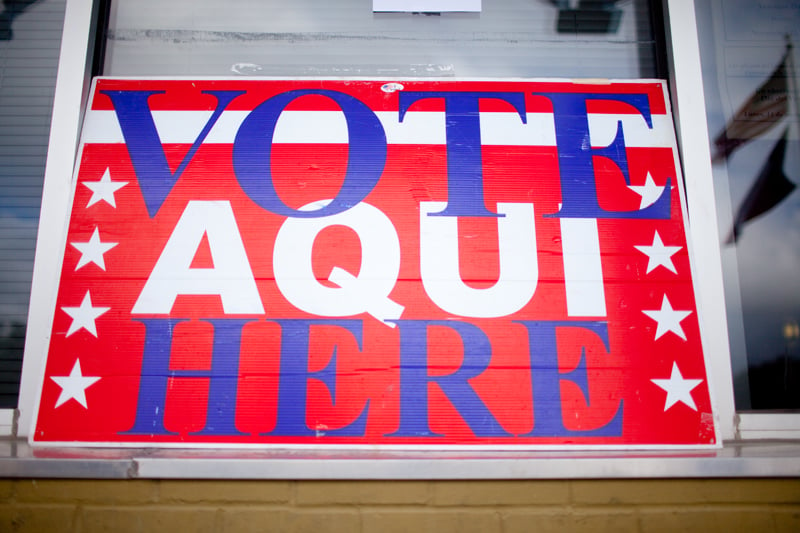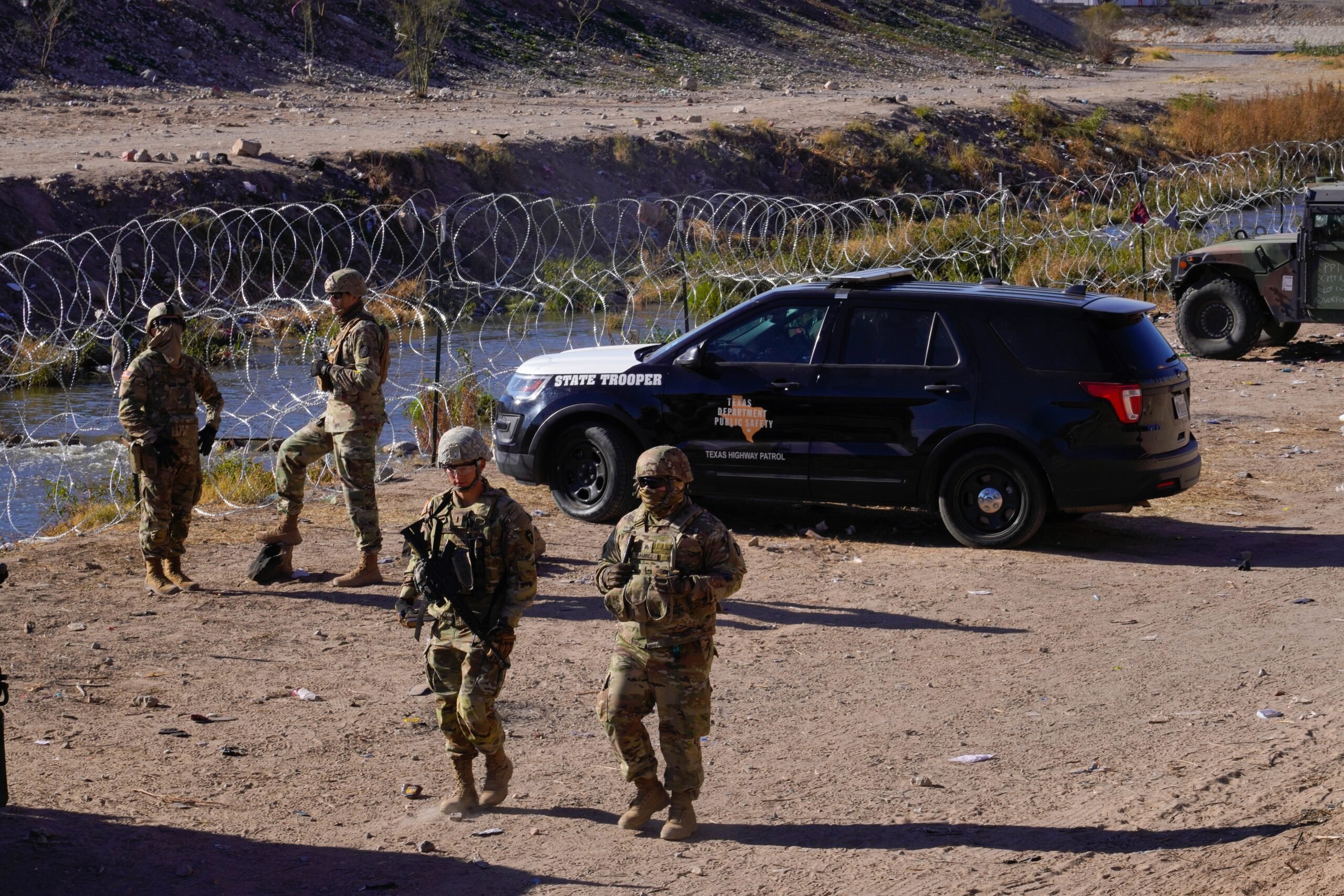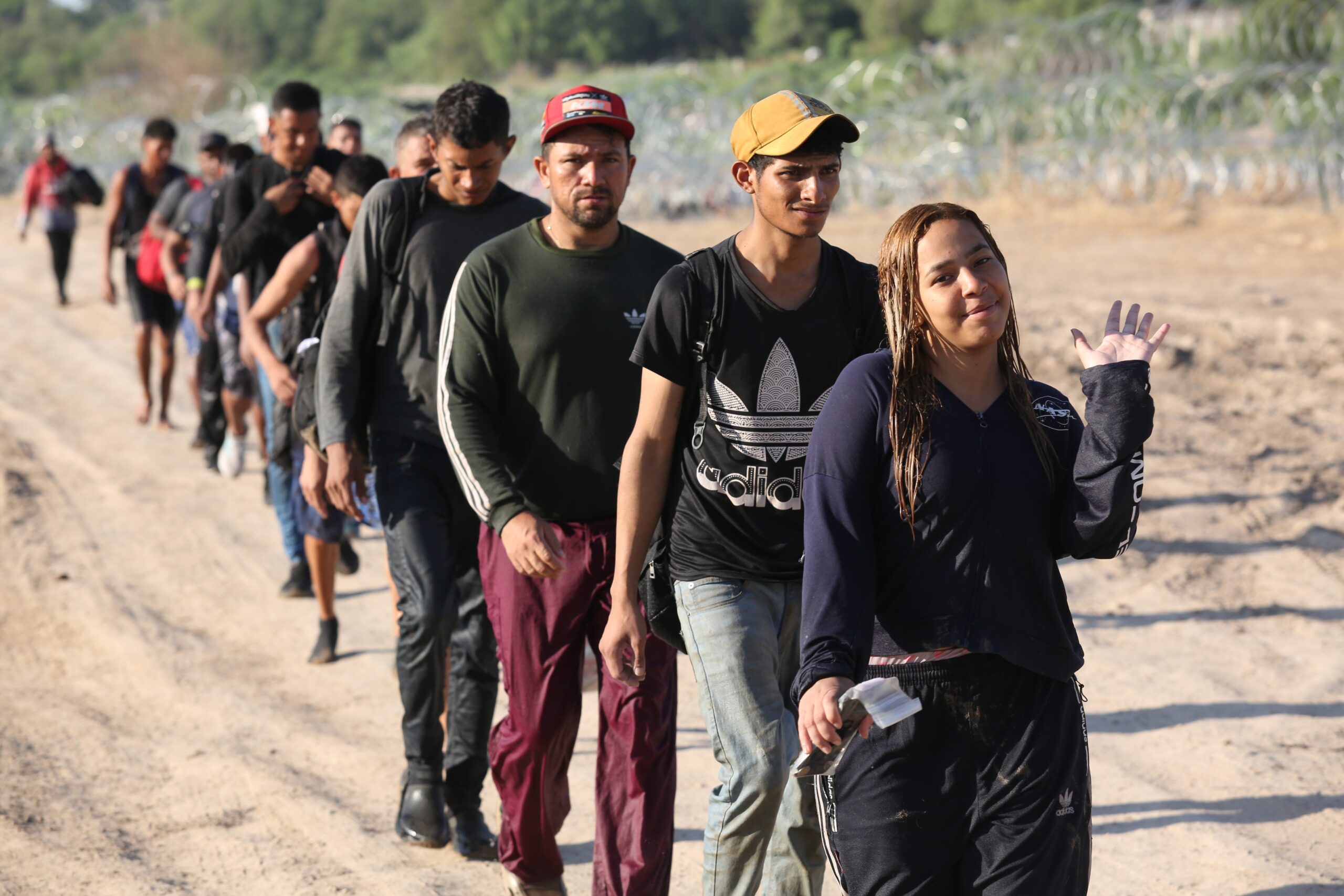
Texas’ Voter ID Law: Nothing to See Here, Move Along

Above: An Election Day sign outside the Travis County Clerk's Office
In the run-up to Election Day, county election officials around the state were almost uniformly upbeat about the first big test of Texas’ voter ID law.
During the early voting window, local papers were full of cooing headlines like, “ID law no problem in Galveston vote,” “Voter ID law no problem in Crossroads,” “New voter ID law working so far,” and maybe best of all, “Voter ID rollout smooth, despite complaints about women being turned away.”
Sure, maybe women were upset, but the line from elections officials around Texas was the same everywhere. Elections administrator Steve Raborn reassured Tarrant County voters that “we’ve really had no complaints, concerns or issues.”
And sure, Wendy Davis, Leticia Van de Putte and Greg Abbott all had to sign affidavits in order to vote because the names on their IDs don’t exactly match their voter registrations. But Abbott says the inconvenience of that extra step has been “overhyped”—how hard is it to sign an extra form?—and that “in reality, there has been no problems whatsoever.”
In reality, the problems with the voter ID law are the same ones they’ve always been.
The voter ID law still gives local election workers—and the tea party poll watchers over their shoulders—far too much leeway in determining whose votes get to count.
The photo ID requirement still adds an extra hassle to something that we should make as easy as possible. One Observer staffer voting today at Austin’s Carver Elementary School was told she couldn’t vote using her U.S. passport—one of the seven approved forms of photo ID—because the polling place didn’t have a machine to read it. She was allowed to vote only after insisting, and waiting for a poll worker to get approval from a call center.
As of 2011, around 600,000 registered Texas voters didn’t have an driver’s license. (By Monday, Texas had issued just 104 voter ID cards.) Some of those people may cast provisional ballots today, and some of those may return later with proof of ID so that provisional vote will count.
Some of them—like 90-year-old Jim Wright, former Speaker of the U.S. House of Representatives—won’t have the right ID and will need someone to drive them to a Texas DPS office for a voter ID card. Then they will need to go back again because they didn’t bring the proper forms of ID required to get the right form of ID to vote.
Most of them will struggle with this system, or choose not to, quietly. They won’t have time to miss work while a poll worker confirms their ID over the phone. They won’t have a personal assistant to drive them around town.
Texas’ voter ID law is so dangerous because its real harm is difficult to measure. The state that already has the lowest voter turnout in the nation just sinks a little lower. High-level election administrators will simply see a system running smoothly. And the prevalence of voter fraud will remain steady at almost zero.
This year’s early voting total actually far outpaced early voting in the last constitutional election: 318,000 votes this year compared to 167,000 in 2011. That could be because early voting is more popular, or because of big-ticket items like Prop 6 to fund the state water plan, Houston’s mayoral race or Astrodome renovations.
Secretary of State John Steen has floated the theory that so many more people are voting this year because of the new voter ID law—voting, in other words, to make sure they still can.


